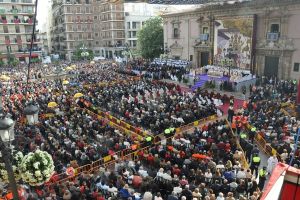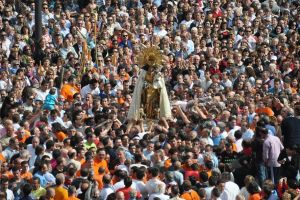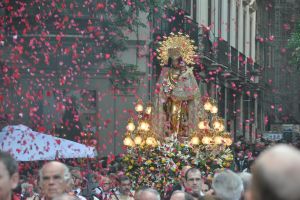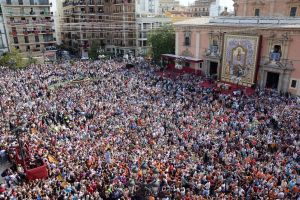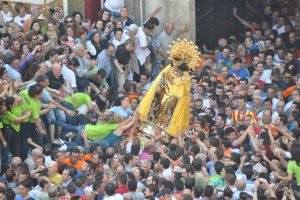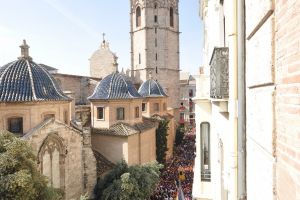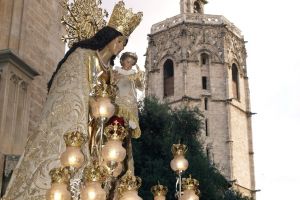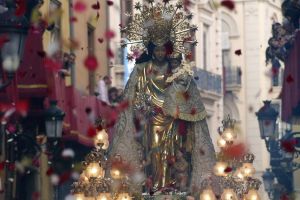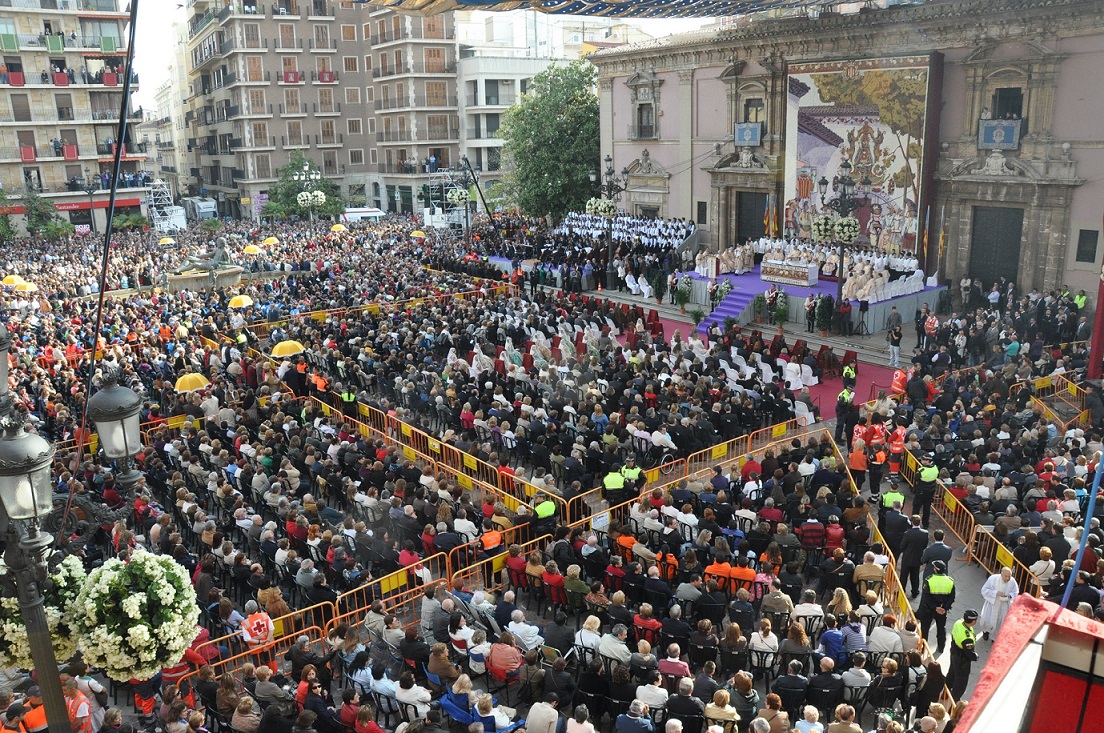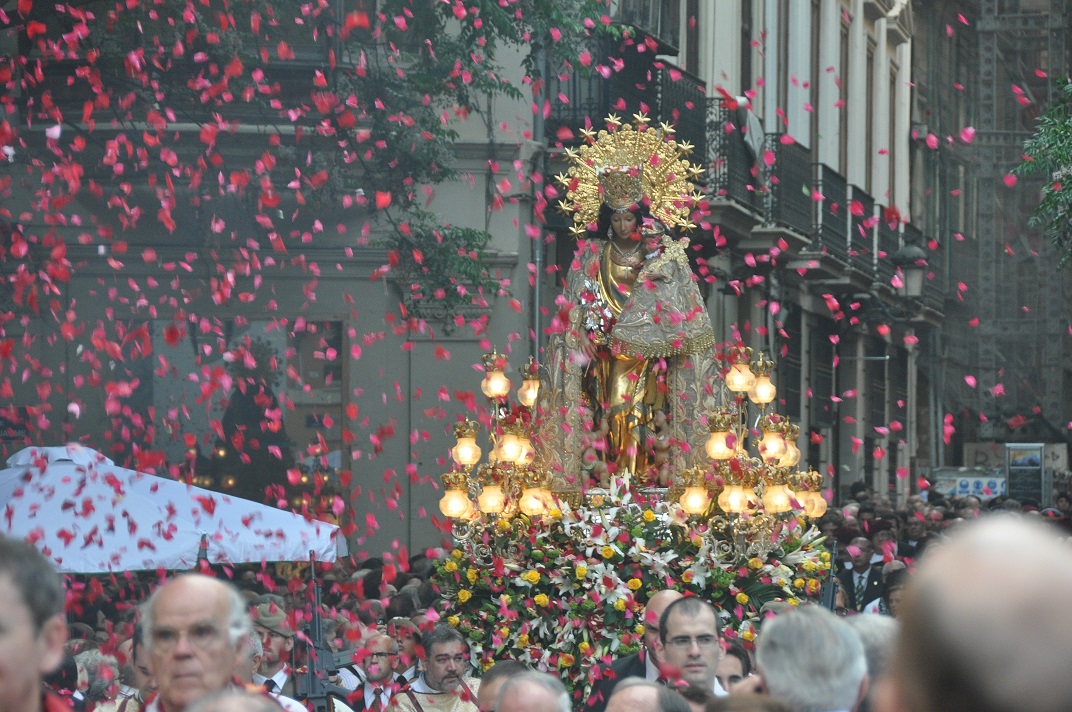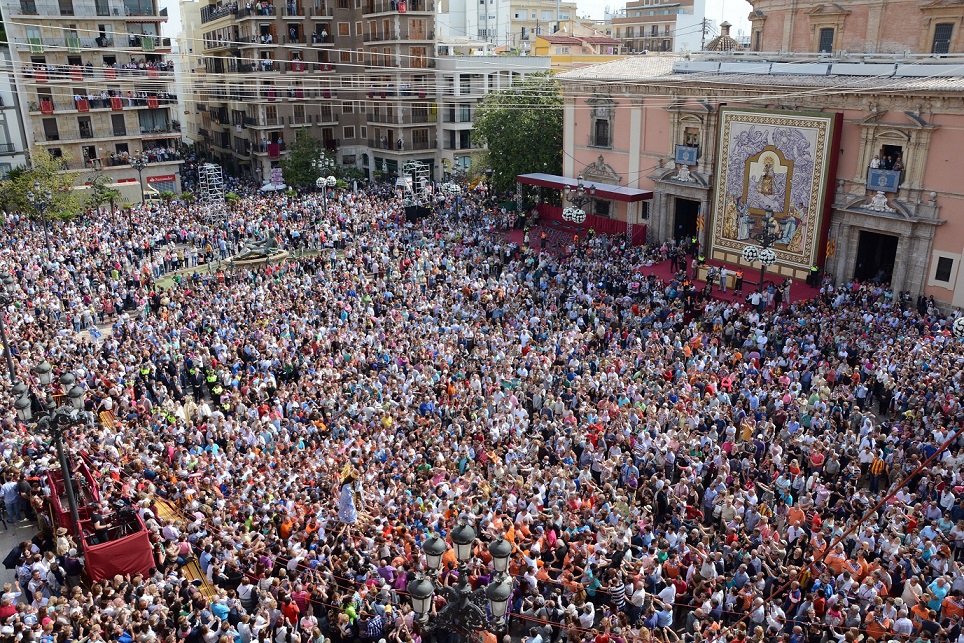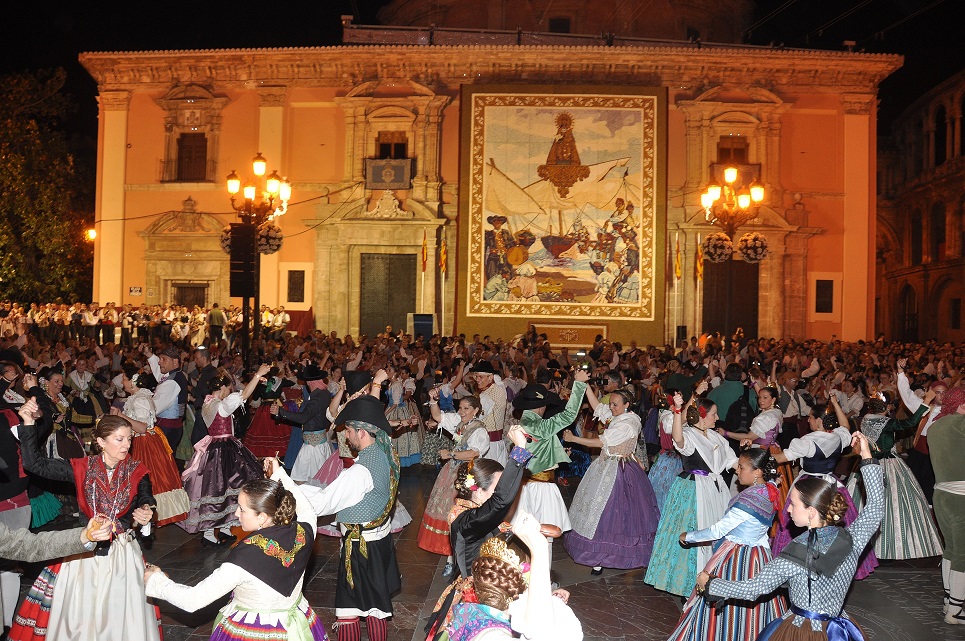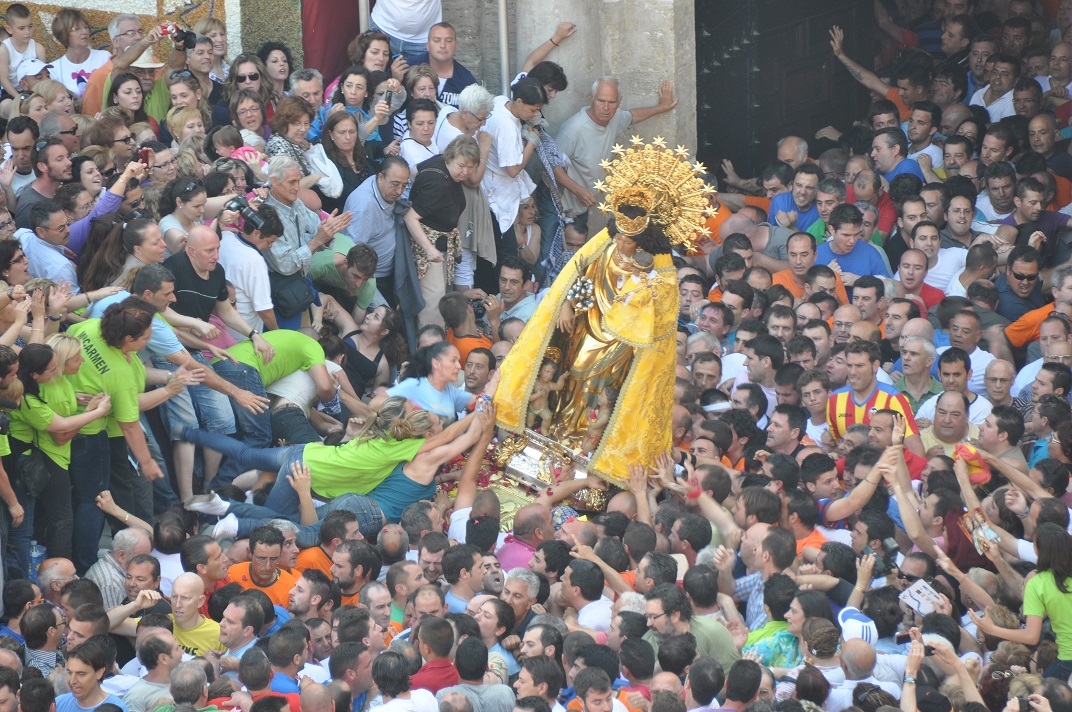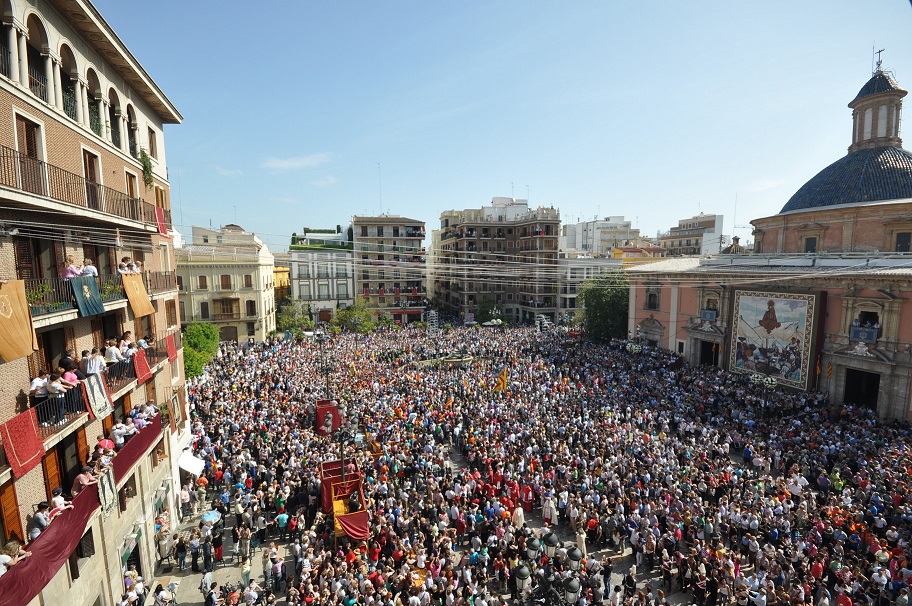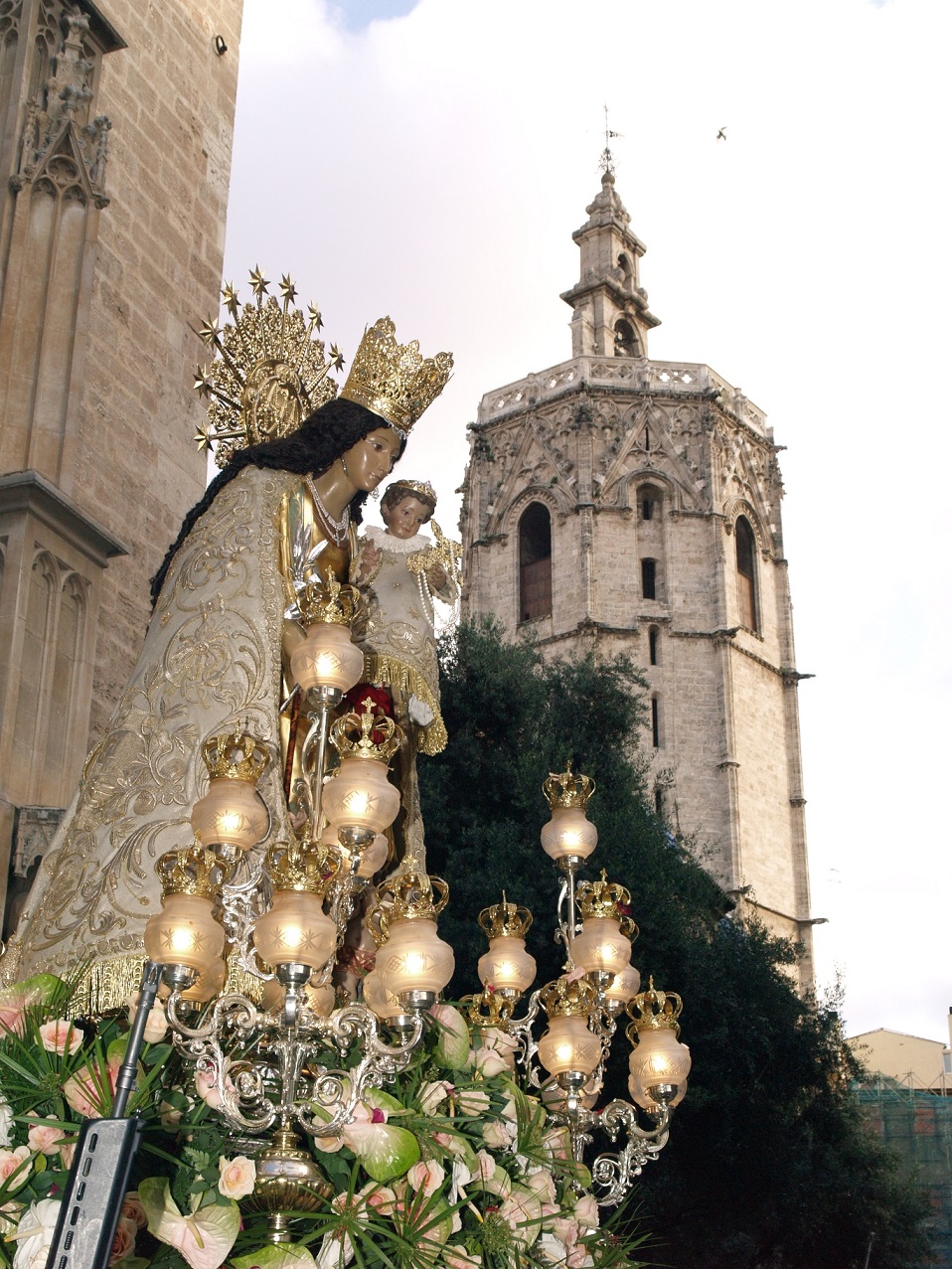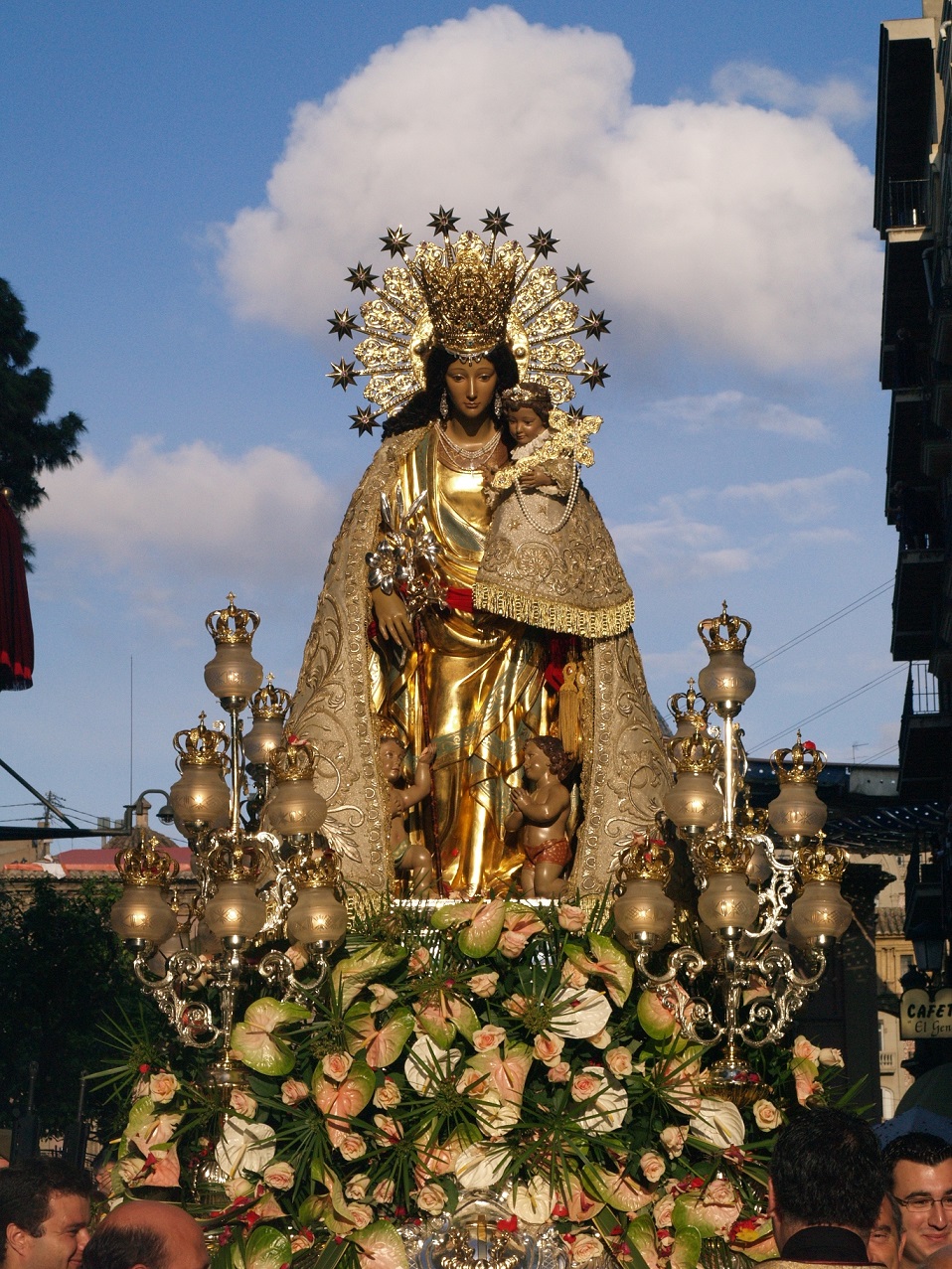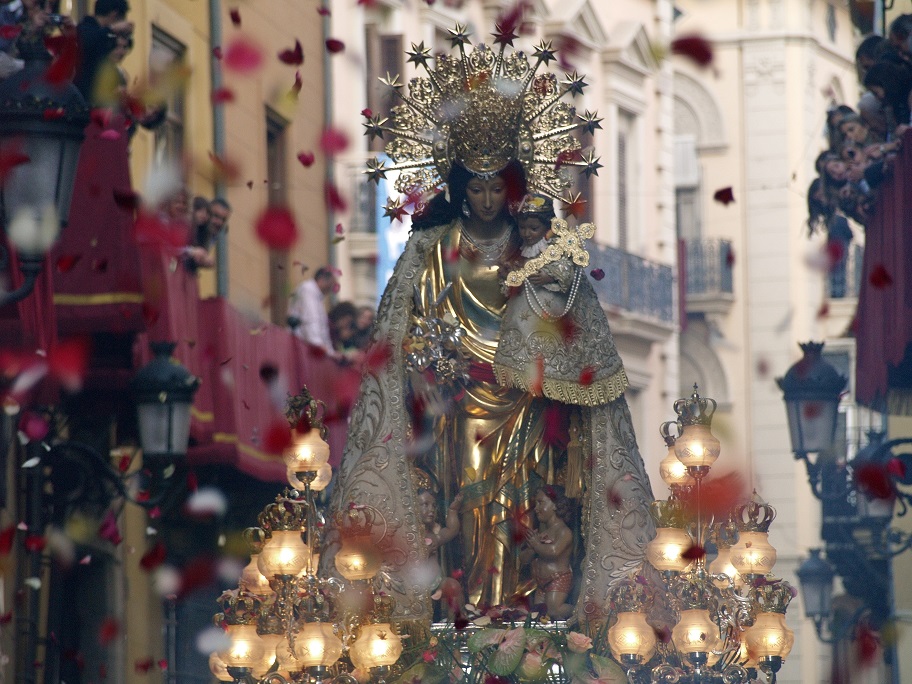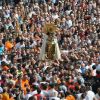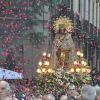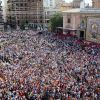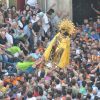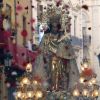MARE DE DÉU DELS DESAMPARATS
Sunday, 10 May 2020
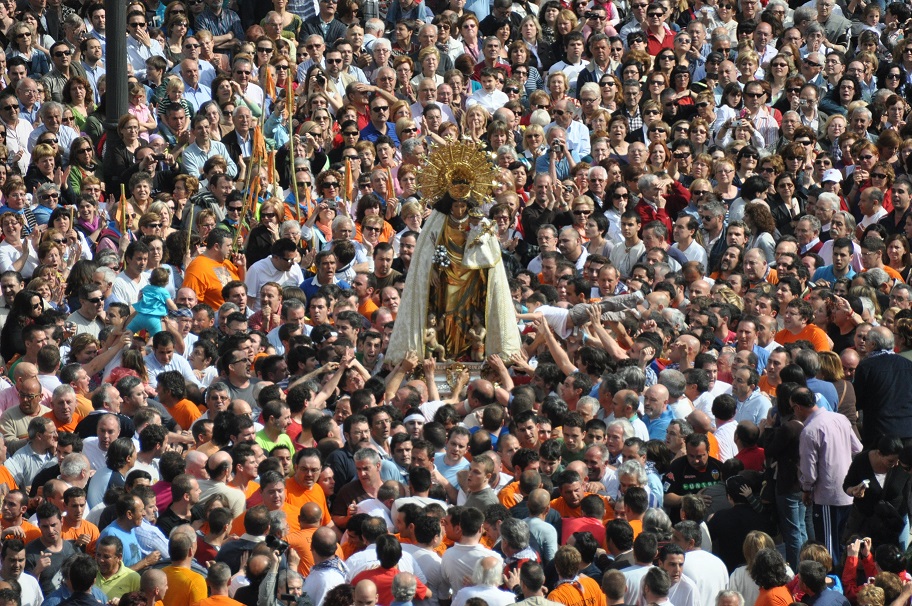
The Mare de Déu dels Desemparats (Our Lady of the Abandoned) is the Patron Saint of València. Her celebrations are held on the second Sunday in May. In the 18th century, changes in Mary’s worship sites, attempts not to overshadow Franciscan and Jesuit devotion to the Immaculate Conception, and growing popularity of the Virgin of the Desemparats, Folls i Orats resulted in a dedicated solemn mass to honour this Virgin, with her own liturgy, on the Saturday previous to the second Sunday in May.
Popularly known as the Geperudeta (the Hunchback Lady), the festa begins with the making of a flower tapestry, with approximately 200 kilos of flower petals, wallflowers and bloodroot. On Friday, a choir sings pontifical vespers at the basilica. On Saturday, commemorating the Papal coronation of the sacred image, three main services take place to honour the regional patron. While the tapestry is made, Vespers are sung inside the Basilica of the Virgin, presided over by the Archbishop, followed by chants by the Virgin’s Choir at five in the afternoon. Three hours later it is time for the Sabatina and the Hail Holy Queen.
Since 1975, many traditional dancing groups perform their danses to honour the Patron Saint. This folk event that has gained popularity through the years and currently starts several days before the actual festivity.
Plaça de la Mare de Déu is bursting with people at night. At twelve, the fallera major (the Queen of the Falles festival) and her entourage open the popular dansà, with typical dances in Valencian folklore. People await nervously for the church gates to be opened at five in the morning so that they can finally enter the temple and laud their Lady patron in the Descoberta mass. The Pilgrim image is guarded at the sacristy until it is transferred at ten in the morning. Before that, clergymen march in procession, and music is played by the Music School and the Juan Bautista Gomes Children’s Choir. After her proclamation in the Missa d'Infants (Children’s Mass) the fallera major infantil and her court leave their flowers on the altar. Lastly, the time comes for the devotees to carry their Virgin to the Cathedral for the Pontifical Mass. The distance of the procession is short but it takes a fairly long time, given the crowds of followers.
The general procession, which is more orderly and with more protocol, starts at seven in the evening under a rainfall of petals that bring colour to the itinerary. This procession has not changed for five hundred years. It is noteworthy to observe The Bell-ringers’ Guild for their hard work, particularly for the ringing of the Micalet bells during the celebrations.
During the whole month of May, church services paying tribute to the guilds illustrate the devotion to the Mare de Déu dels Desemparats. So the party does not finish in just one day. Celebrations to honour the Virgin continue on subsequent days: from the holiday of the florists, who decorate the temple half way through the week, to parades with music played by university estudiantines (student groups who play traditional instruments and sing serenades), or the hand-kissing on the second Wednesday after the festivity, organised by the brotherhood of the Virgin’s followers.




